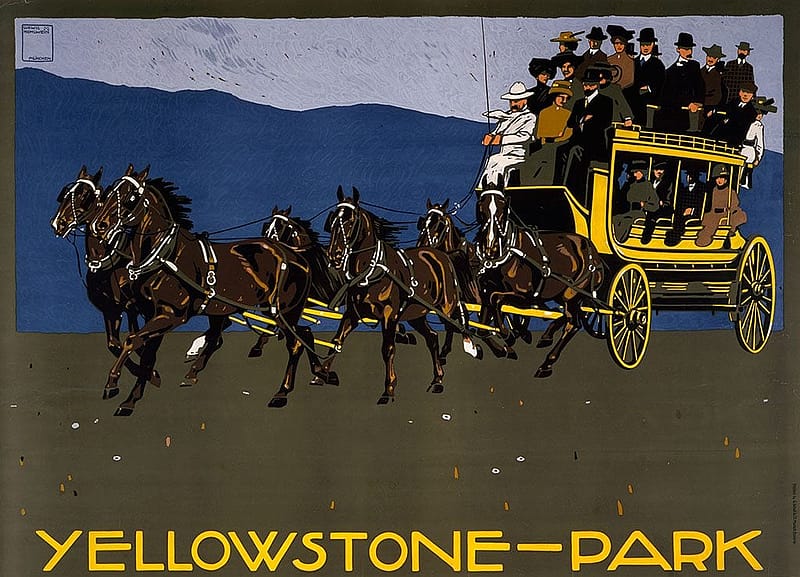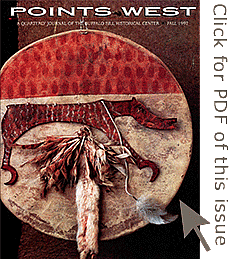
Coaching in Yellowstone – Points West Online
Originally published in Points West magazine in Fall 1997
Coaching in Yellowstone National Park
By Christine Houze
Former Curatorial Assistant, Buffalo Bill Museum
Early tourists in Yellowstone National Park traveled in a sophisticated transportation system of horsedrawn coaches. In 1909 the tour companies had six stagecoaches, 165 observation coaches, 79 surreys, and over 100 wagons. An observation coach was lightweight compared to a stagecoach and required only four horses. It offered its 11 passengers unobstructed viewing of Yellowstone’s wonders.

Automobiles were allowed in Yellowstone for the first time in 1915. For one season, horsedrawn coaches shared the roads with motorized vehicles; however the horses were terrified of the noisy autos. Park administrators realized it was either coaches or cars. The coaches lost.
The Park’s transportation companies tried to sell their specially made observation coaches but few people wanted them. Farmers and ranchers had no use for sightseeing coaches. Only a small number were sold. The rest of these colorful, sturdy coaches were piled together and burned. The Buffalo Bill [Center of the West] has one of the survivors. [Ed. note: at the time this article was written, 1997, the coach was the focal point of Cody to Canyon, an exhibit that celebrated the 125th anniversary of the Park. In 2016, it is part of the exhibit Putting Yellowstone on the Map.]

For many years the coach sat in a warehouse. Paul Fees, then-senior curator, remembered it as Center staff began to plan the [Coaching in Yellowstone] exhibit. The coach needed conservation work but no major restoration. The museum contacted Rawhide Johnson of Cody, an expert in coach conservation.
Johnson has a passion for horsedrawn wagons. He attributes his interest to growing up on a Montana ranch where his father relied solely on genuine horse power. Johnson began restoring (rebuilding) sheep wagons and buggies in high school. He has been collecting harnesses and Yellowstone coach memorabilia for years. Along the way he also gathered a reputation for exacting work.
Rawhide used a mixture of linseed oil and turpentine to simultaneously clean and protect the coach’s wood. The decorative red pinstriping required minimal touch up. However, the leather back boot (luggage carrier) had to be completely replaced. Rawhide also replaced the roof’s lining. Mice had long ago destroyed the upholstered seats so Rawhide had a Montana company recreate them using the right color leather and horsehair stuffing. The result is an observation coach that looks very much like it had when it left the Park, having survived the fate of trial by fire.
Post 147
Written By
Nancy McClure
Nancy now does Grants & Foundations Relations for the Center of the West's Development Department, but was formerly the Content Producer for the Center's Public Relations Department, where her work included writing and updating website content, publicizing events, copy editing, working with images, and producing the e-newsletter Western Wire. Her current job is seeking and applying for funding from government grants and private foundations. In her spare time, Nancy enjoys photography, reading, flower gardening, and playing the flute.










